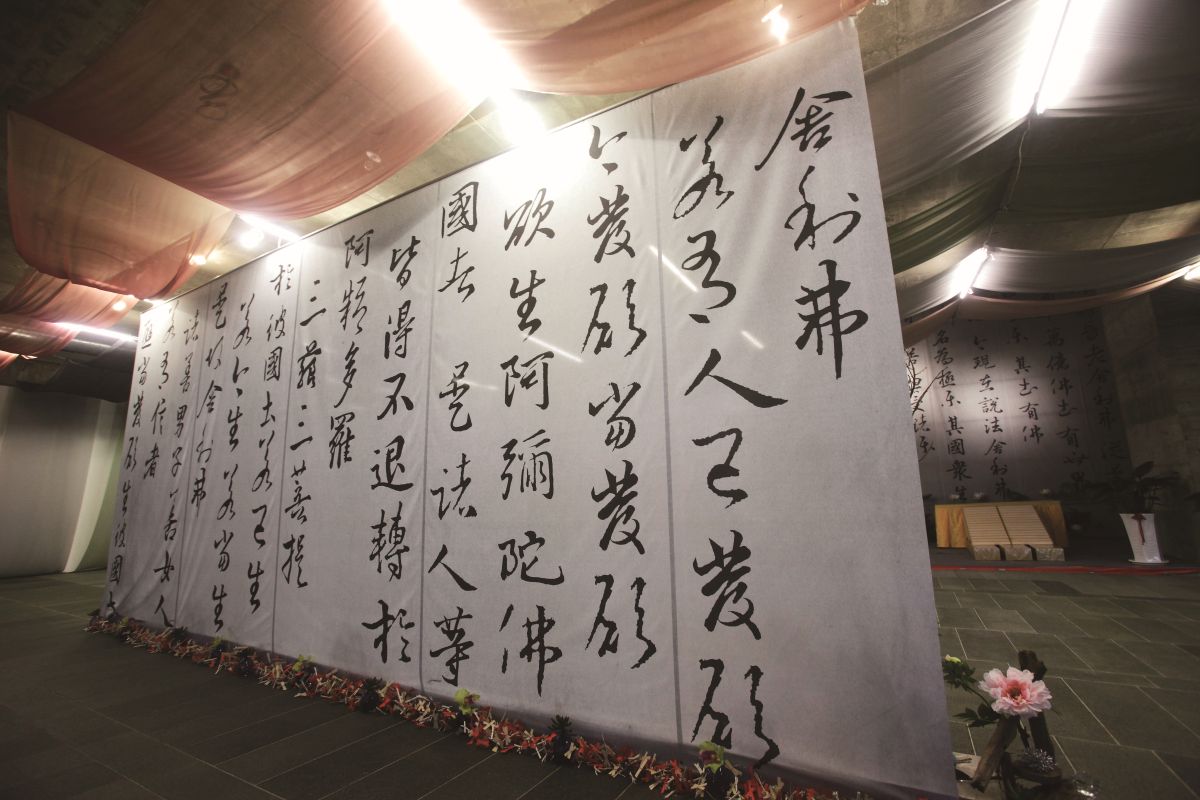Special Topics
Receive and Uphold the Buddha’s Teaching by Reading Sutras
 Buddhist sutras are the Buddha's teachings as compiled by his disciples. More than 2500 years ago, the Buddha preached the Dharma mostly in the areas along the Ganges River. By answering people's life questions to help them resolve their afflictions, the Buddha demonstrated his wisdom to guide and transform sentient beings, as recorded in the sutras.
Buddhist sutras are the Buddha's teachings as compiled by his disciples. More than 2500 years ago, the Buddha preached the Dharma mostly in the areas along the Ganges River. By answering people's life questions to help them resolve their afflictions, the Buddha demonstrated his wisdom to guide and transform sentient beings, as recorded in the sutras.The Chinese Buddhist canon as we can see today consist of works translated by great ancient Buddhist practitioners, including renowned masters such as Kumarajiva and Xuanzang. For example, the Heart Sutra, the Diamond Sutra, the Lotus Sutra—especially its Universal Gate chapter on Avalokitesvara Bodhisattva, the Amitabha Sutra, the Earth-Treasury Sutra, the Medicine Buddha Sutra, the Vimalakirti Sutra, the Avatamsaka Sutra, and the Platform Scripture of the Sixth Patriarch--- are all well-known Mahayana Buddhist texts that are popular with Chinese practitioners.
Since ancient times, patriarchs and great practitioners have encouraged people to read sutras. Sutra reading represents the step of "listening", the first factor of the three steps of cultivation—namely, listening, contemplating, and practicing. Apart from reading and reciting Buddhist sutras, we also need to cultivate correct knowledge and understand the meaning of their contents, as well as emulate the virtues of the Buddhas and Bodhisattvas, in order to correct our behaviors.
Master Sheng Yen not only studied sutras, but also gave talks on them. He urged his disciples to delve into the Buddhist canon to develop in wisdom. Furthermore, as Master Yinshun mentioned in The Path to Buddhahood, after taking the Three Refuges, devotees should listen to authentic teachings of the Dharma more often, in order to genuinely enter the Buddha path. In addition, learning the Dharma through Buddhist texts is the gateway to starting one's practice.
As with works of literature, Buddhist sutras follow a standard format, with their contents revolving around a certain theme, character, thing, place and object. As long as we know the basic structure and have some preliminary knowledge, understanding Buddhist sutras is not difficult at all. For example, the well-known Heart Sutra, whose protagonist is Bodhisattva Guanyin (Avalokitesvara), illustrates the subject of "emptiness" in its ultimate sense.
 A Buddhist sutra normally begins with the phrase—"Thus have I heard"—and concludes with the line—"believe, accept, uphold, and practice accordingly". Its contents are generally divided into three major sections—introduction, main body, and dissemination—to respectively account for the authenticity and significance of the sutra, with the "main body section" illustrating its essence.
A Buddhist sutra normally begins with the phrase—"Thus have I heard"—and concludes with the line—"believe, accept, uphold, and practice accordingly". Its contents are generally divided into three major sections—introduction, main body, and dissemination—to respectively account for the authenticity and significance of the sutra, with the "main body section" illustrating its essence.In the "main body section", we can often find how the Buddha used metaphors, causes and conditions, as well as the stories of his previous lives, as a means to inspire the hearers to receive and accept the wisdom of Buddhadharma. For example, the Vimalakirti Sutra features a dialogue of questions and answers between the household practitioner Vimalakirti and Bodhisattva Manjushri, with the aim of elaborating on the essentials of how lay believers should cultivate their mind, as well as the philosophy of the Mahayana bodhisattva path.
Open any Chinese Buddhist sutra, and you will find the Sutra Opening Verse before its title and content, which reads: "The supreme, profound and subtle Dharma is hard to encounter over the span of hundreds of thousands of kalpas. Since I am now able to see and learn it, I aspire to understand the true meaning as taught by the Tathagata." Being in possession of a precious human form is an extremely precious blessing, not to mention being born in an era where we have access to abundant resources of Buddhist teachings, as well as being able to learn the Dharma, study the sutras, and engage in practice. So let us start reading the sutras, and embrace the teachings of Buddhadharma.
Photos: Lee fan (李東陽)
Translation: Cheng-yu Chang (張振郁)
Editing: Chia-chen Chang (張家誠), Keith Brown
